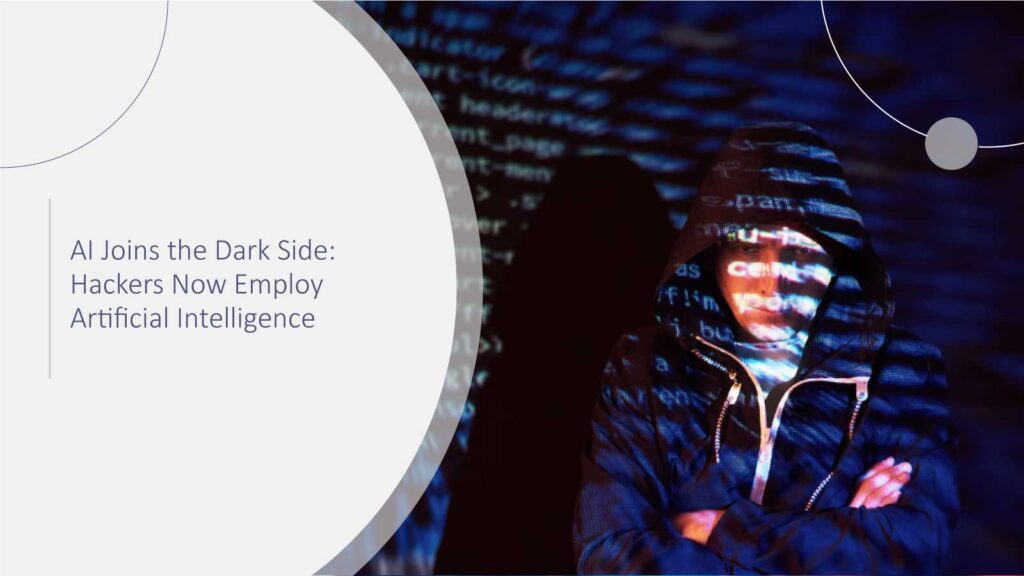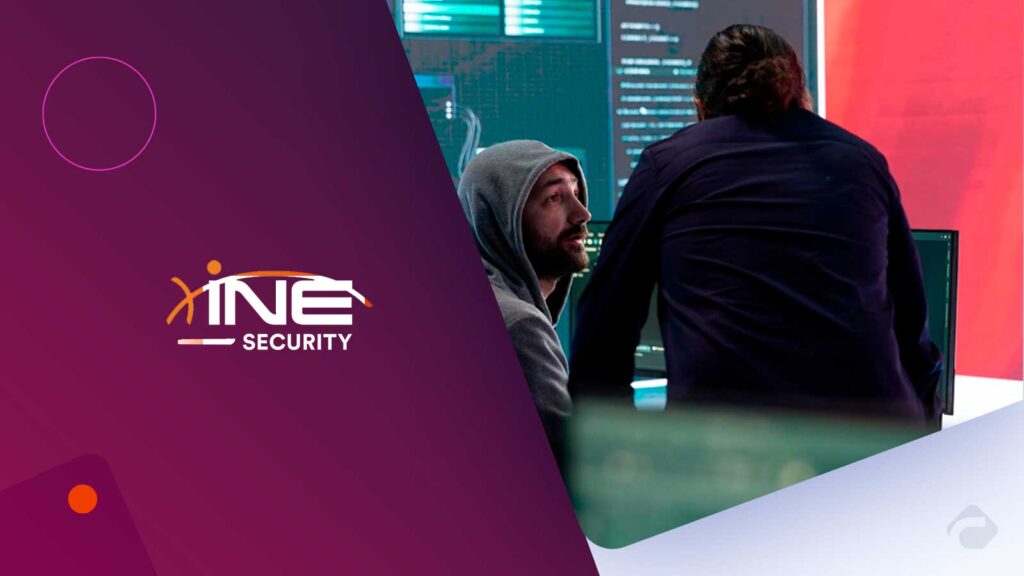Imagine this: On a Monday morning, you have a look at your inbox. One of the first things you see is an urgent email from your CFO, asking you to approve a wire transfer. The manner in which it is expressed is typical, the signature looks perfect, and the context is logical. Nevertheless, the feeling that something is… wrong, stays with you. You stop for a moment. What you aren’t aware of is that the mail was never actually written by a human trickster; rather, it is an AI, a highly advanced system, which, in a matter of seconds, simulated the way your CFO communicates that sent it.
This is the world of cybersecurity in 2025, a time when AI is not only a cause of cyber threats but also their solution.
Artificial Intelligence, which was once the very last line of defense for data, has now been taken over by cybercriminals. Besides AI-generated phishing emails, there are also deepfake voice scams and polymorphic malware; intelligent algorithms are hackers’ newest and most powerful associates. And the change is not a small one; it’s a total one.
We first need to realize that AI has sided with the villains, then understand what this means for us, and finally figure out how to keep a step ahead.
When Hackers Got Smarter
For quite some time, those who were involved in the fight against hacking and computer viruses have been saying that Artificial Intelligence might be used as a weapon in the hands of evil. The future they were talking about is already here; it is not only a matter of time anymore. Performing acts of hacking today includes the use of machine learning models, generative AI, and large language systems in order to automate the process, expand it, and personalize their attacks with frightening precision. By 2027, more than 40% of AI-related data breaches will be caused by the improper use of generative AI (GenAI) across borders.
For example, phishing. There is no such thing as a outdated “Dear Sir” letter full of mistakes anymore. Today, malefactors deliberately dump generative AI with such data as LinkedIn profiles, company press releases, and public emails to get a tailored, extremely persuasive message that sounds like your co-workers.
As per the IBM 2025 Threat Intelligence Index, the use of generative AI in creating phishing content that appears authentic enough to fool even human readers and evade traditional filters is a tactic adopted by cybercriminals. Trend Micro’s State of AI Security Report reveals that AI-powered attacks have increased significantly by over 30% in just a year.
You have to think about the fact that he number of assault attempts is not the only thing that is rapidly growing. They are getting more intelligent, quicker, and more difficult to detect.
The AI Hacker Toolkit: What’s in Play
So, what precisely are hackers doing with AI? We can figure out what they are doing mostly by listing out the use cases, which are frequently exploited by them.
1. AI-Generated Phishing and Social Engineering
Phishing has always been about deception. Now, it is deceptive at the level of large numbers. One of the things AI can do is to impersonate a certain style of writing, it can bring up an event that happened recently, and it can use a feeling because people tend to receive things on an emotional level. The idea behind all this is to make the proposition look as if it really comes from a “living” person.
Picture an email that says, “Could you please expedite that payment we talked about during Friday’s meeting?” as if it were sent out by your manager, and the timestamp was absolutely real.
It’s AI, not your imagination.
The AI-powered phishing emails, according to a report by security firm Darktrace, have an opening rate that is 78% higher than their traditional counterparts. Why is it so? Because they are human-like.
2. Deepfakes and Voice Cloning
Initially, in the year 2025, several companies based in the U.S. reported that they had situations where criminals tricked them by using deepfake voices of their executives in order to get permission to carry out the financial transactions they wanted. It is a generative AI tool that can do the trick of cloning a voice from a mere three seconds of the original recording.
What if it is a voicemail from the CEO requesting you to send confidential data? Do you doubt it if the voice sounds real?
The Federal Trade Commission, on the other hand, announced that the number of voice cloning scams surged by 350% during 2024-2025 and showed no sign of stopping.
3. AI-Enabled Malware and Autonomous Attacks
AI-driven malware, sometimes referred to as polymorphic malware, is capable of changing its own code to stave off detection. AI malware differs from conventional malware in that it can recognize its environment and change accordingly, so it is always one step ahead of the defenders (the security systems) who rely on static signatures to spot it. AI-enhanced malicious attacks are the top emerging risk for enterprises …for the third consecutive quarter.
One could say it’s malware with a brain evolving, concealing, and doing harm when you least expect it.
As per sources, the average expense due to a data breach through AI-driven attacks hit almost $4.9 million in 2025, which was a 10% increase compared to the previous year. To the vast majority of enterprises, this is not just a technical problem, but an existential threat.
4. Targeted Reconnaissance and Exploitation
The need for hackers to search manually for vulnerabilities is no more. AI tools can automate reconnaissance, scanning thousands of systems in minutes to identify vulnerabilities to locate open ports, firewalls that have been configured incorrectly, and vulnerabilities that can be exploited.
Next, machine learning algorithms determine which targets present the greatest possible returns. Simply put, AI empowers hackers to function on the same level as cyber analysts, only that they are quicker, less costly, and without morals.
5. Model Poisoning and AI Supply Chain Attacks
The attackers are now shifting their focus to the AI models, which are the core of the businesses, as the latter are progressively adopting and integrating AI models in their operations. They do so by inserting incorrect data or requests in the training set so that the output is manipulated – this is known as model poisoning.
It isn’t an unlikely scenario: Trend Micro’s 2025 report is pointing to the increase of “AI supply chain attacks,” a situation where adversaries take over machine learning models at the origin before their deployment.
Why Should Leaders Care
It is estimated that one CISO out of the whole company is only able to handle the problem risks that AI-driven attack scenarios pose.
AI-driven assaults are not merely infrastructure-related issues. They can also result in loss of trust, which AI attackers take full advantage of. They specifically focus on the most vulnerable part of cybersecurity – human decision-makers. End-user spending on information security will reach US $183 billion worldwide in 2024, with a CAGR of 11.7 % with a CAGR of 11.7 % from 2023 to 28.
Executives, finance departments, and HR units are the best targets of hackers because they are aware of the direction in which the data and money are flowing. The falsification of a voice or impersonation of a fake email at the right time can lead to the defeat of security measures worth millions of dollars – all because one person was tricked.
So, when you hear next time that cybersecurity is “only an IT thing”, recall that AI doesn’t infiltrate systems by breaking into them; rather, it is through social engineering that it achieves this.
The Double-Edged Sword: AI for Offense and Defense
An ironic thing is that artificial intelligence is the biggest offender and at the same time the biggest helper.
The opposite sides of a cyber-war, bad guys and good guys, are equipping AI technology in their own respective arsenals to outsmart each other. Machine learning has been brought in by the likes of Darktrace, CrowdStrike, and Microsoft Defender for Endpoint to offer cyber defenses in real-time anomaly detection. These systems identify such activities that humans hardly ever think of. More than 90 % of AI capabilities in cybersecurity are expected to come from third-party providers, making it easier for companies to adopt cutting-edge solutions.
Think of it as a chess game held in the virtual world. For every single move that hackers make through AI, they are, in turn, counteracted by defenders employing a smarter kind of AI. The main thing that comes down to is whoever discovers faster, whoever learns faster.
Gartner predicts that over 75% of security operations centers will have AI-driven automated activities resulting in real-time threat analyses by 2026. This is a positive indication; still, it is a race against time.
Staying Ahead: Practical Steps You Can Take Today
The question we ask ourselves, knowing the problem, is what our reaction should be? Professionals and organizations, without losing control or reacting excessively, can use this as a way to realign their strategies:
Upgrade your phishing defense playbook.
Spam filters alone will not do the job. Introduce AI-powered threat detection methods that are able to analyze not only the context but also the tone, besides keywords. It is necessary to constantly run exercise simulations with AI-generated phishing scenarios.
Educate employees about AI-driven scams.
The main and most important line of defense is still Awareness. Equipping employees with the skills to detect fakes in audio messages, videos, and urgent email requests, even when they look like the real thing, is the right approach.
Validate all AI tools and vendors.
Before you integrate with your business solution, it is good to assess the security and data usage of AI products and vendors. Not only should they make the use of clean data easy for the training of models, but they should also be in line with the well-established AI ethics guidelines.
86 % of decision-makers believe the use of AI technology in cybersecurity tools will reduce the success of zero-day security incidents.
Implement multi-factor and zero-trust frameworks.
The zero-trust model (“never trust, always verify”) is not only a concept that is heavily discussed. It serves as your most secure layer of defense against identity-based and socially engineered attacks.
Invest in AI for defense, not just productivity.
Engage predictive analytics, anomaly detection, log data, and behavioral AI systems in such a manner that you would be able to identify the system’s weak points even before they come into existence. Without a doubt, prevention is far less costly than recovery.
Stay informed and collaborate.
Become involved in cybersecurity networks, subscribe to trustworthy reports, and be active in communities that support threat-sharing. In the realm of cybersecurity, knowledge is among the most potent weapons you can have.
Conclusion
Employing AI in cybercrimes is a matter of human test rather than a technological test. The most capable intelligence in one case to protect can also be used in another to trick. While intruders are using AI to make their offensive tools, companies should use AI to make their systems impregnable. The next battle in the cyber war will not be using fear as a weapon, but rather foresight, where moral and intelligent machines will be our best defense.
FAQs
1. What is an AI-powered cyberattack?
An AI-powered cyberattack is a case where AI and machine learning technologies are used for automation or adding a malicious part in an act such as phishing, data theft, or malware creation. By this method, attackers can achieve the ultimate level of speed and precision in their actions to such an extent that it would be impossible otherwise.
2. How can AI make phishing emails more convincing?
AI gathers information, for example, from publicly available sources, such as a company’s website or social media, and then it uses this information to create texts that not only sound like they were written by a real person but also have the same style and language. Therefore, the phishing email, which is almost indistinguishable from the original, becomes more personalized and trustworthy.
3. Are AI-driven attacks unstoppable?
Not entirely. They are just more difficult to detect using traditional methods. An AI-based, behavior recognition, and continuous monitoring system would be the way to defeat those who create such threats.
4. What industries are most at risk from AI hackers?
The three sectors, finance, healthcare, and government, are the most likely targets of hackers because they contain valuable data and are the foundation of society. However, none of the sectors are completely safe as AI-powered tools can be used to launch several automated attack campaigns at the same time.
5. What can professionals do personally to protect themselves?
First of all, always make sure that communication is trustworthy, then never forget to activate multifactor authentication, do not reveal sensitive information on the Internet, and finally, always keep yourself up-to-date with the methods of AI that are used in scamming. The security of the online world is upheld by the foundation of knowledgeable individuals.
For deeper insights on agentic AI governance, identity controls, and real‑world breach data, visit Cyber Tech Insights.
To participate in upcoming interviews, please reach out to our CyberTech Media Room at sudipto@intentamplify.com.







